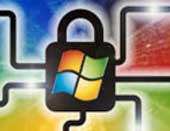Microsoft has equipped its new generation operating system with additional security features, including Bitlocker. This hard drive encryption technology can play a significant role in businesses, but it still has many limitations, which is why the market continues to need other security solutions.
 Bitlocker, previously known as “Secure Startup – Full Volume Encryption“, allows users to encrypt the entire hard drive, advancing beyond the file encryption technique known as Encrypting File System in Windows 2000 and XP.
Bitlocker, previously known as “Secure Startup – Full Volume Encryption“, allows users to encrypt the entire hard drive, advancing beyond the file encryption technique known as Encrypting File System in Windows 2000 and XP.
Combined with Trusted Platform Module (TPM) technology, this feature helps users prevent the theft or loss of computers containing sensitive information and avoids unauthorized access. This approach is derived from the Palladium security technology, which Microsoft later renamed to Next Generation Secure Computing Base.
How It Works
Bitlocker is integrated into the “Enterprise“, “Ultimate“, and “Longhorn” versions of Windows Vista. To use the TPM functionality, the motherboard must have a corresponding security chip compliant with version 1.2 from the Trusted Computing Group. The encryption process in Vista does not occur automatically and must be activated by the user.
The TPM chip is only necessary during the computer’s boot process to verify the integrity of the system. Bitlocker utilizes the hashing capabilities of the TPM program. By comparing the current hash value with the initially determined value, the program can determine whether the BIOS and system files (loader file) have been altered.
Additionally, Microsoft uses the TPM chip to ensure that only designated individuals are allowed to access the data. The encryption of the hard drive content is performed using a key created by Bitlocker and stored in the TPM chip. When the user boots the computer, the operating system automatically reads this key and grants access to the data. Therefore, users will not be able to view the information if they move the hard drive to another computer.
This key can also be stored on a USB flash drive. During boot, the operating system will check if the USB drive is connected to the computer. Using this key in combination with a personal identification number (PIN) will enhance security. Thanks to the “anti-hammering” feature of TPM, after each incorrect PIN entry, the waiting time between two attempts will double. Thus, one would have to wait several days before trying again after 20 failed attempts.
Expert Opinions
Nobert Pohlmann, a professor at the Institute for Internet Security at Gelsenkirchen University of Applied Sciences in Germany, appreciates the decision to directly integrate security technologies like Bitlocker into Microsoft products. Pohlmann believes that this software will play a crucial role in large enterprises, and security solution providers will lose market share due to Bitlocker.
However, the Yankee Group disagrees with this assessment. In the report “Vista Won’t ‘Terminate’ the Windows Security Market“, Yankee predicts that Bitlocker/Vista will only slightly reduce the demand for other third-party security tools.
According to Richard Aufreiter, the Security Product Director at Utimaco, Bitlocker only replaces “a portion of the functions” compared to Utimaco’s Safeguard Easy version. It can encrypt the system partition of the computer but does not support other data storage devices. “Therefore, we will approach Microsoft’s software with caution, at least in the initial phase“, Aufreiter stated.
Phan Ba




















































